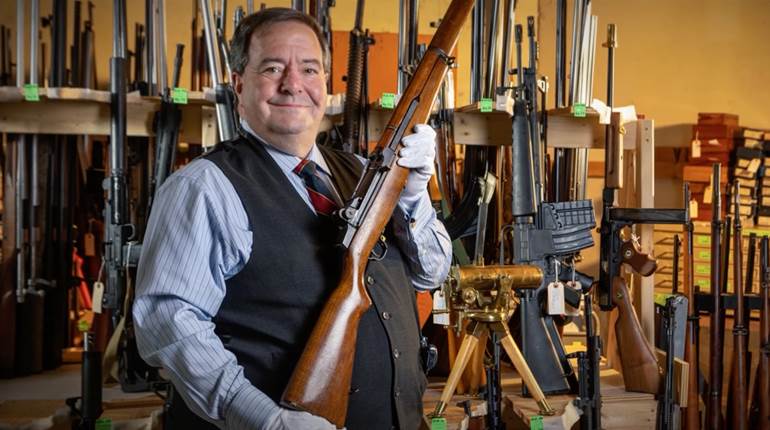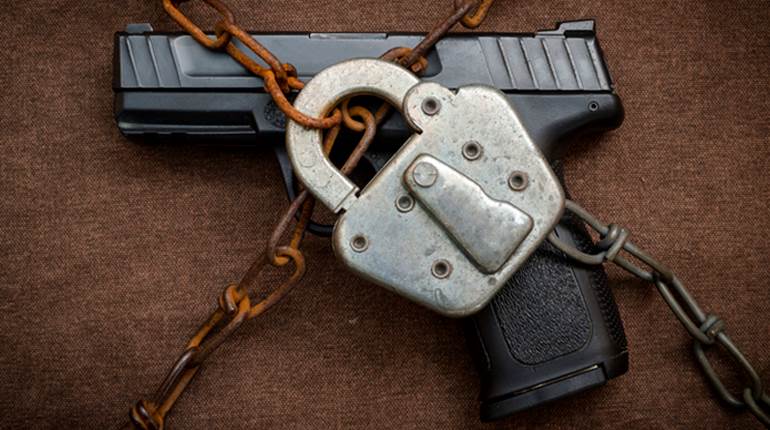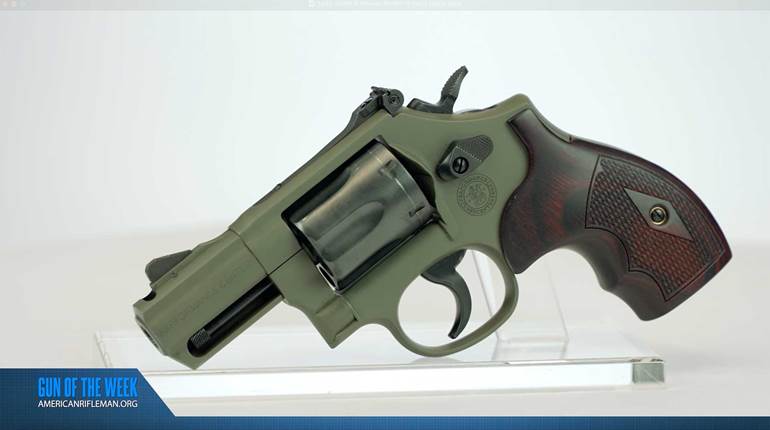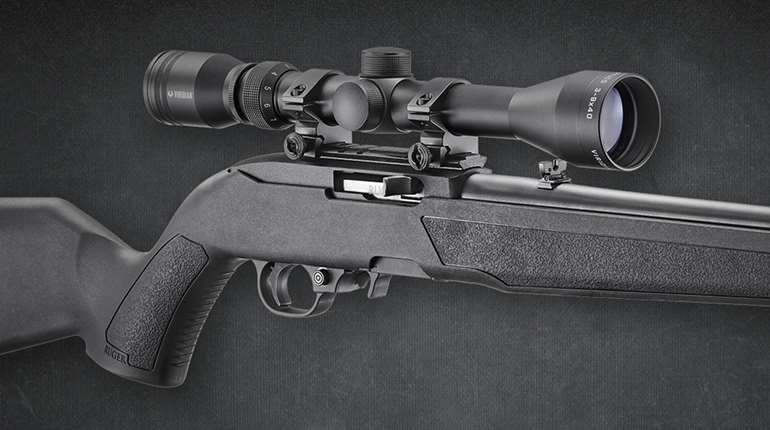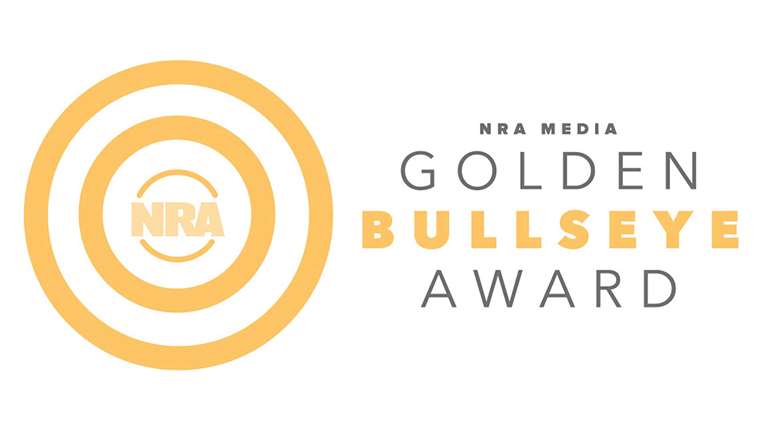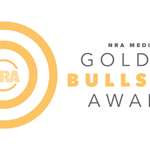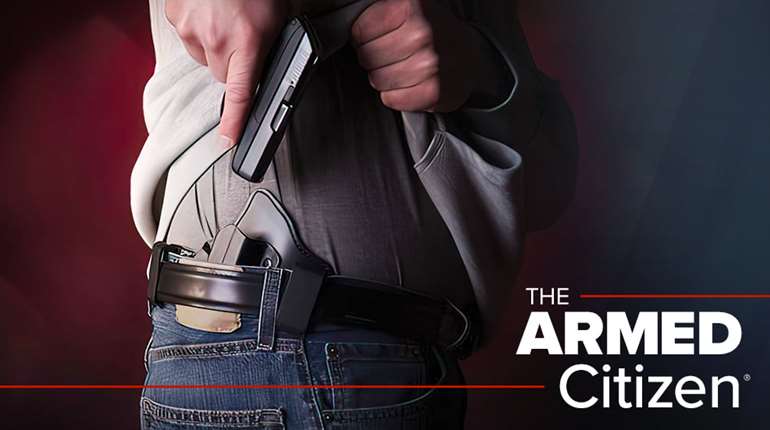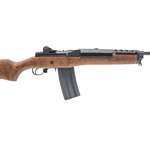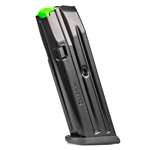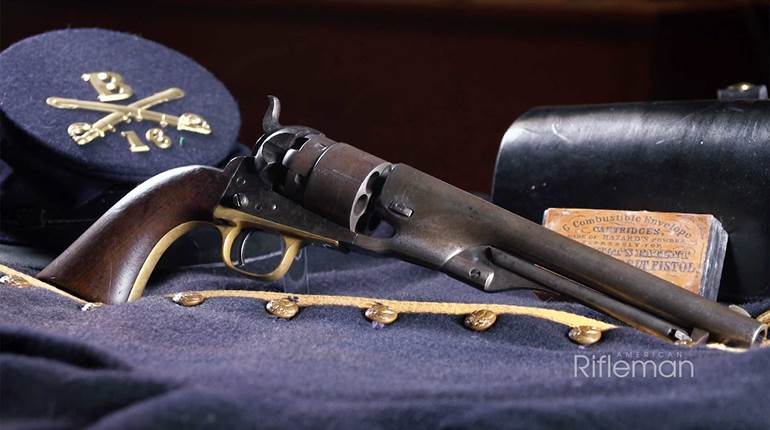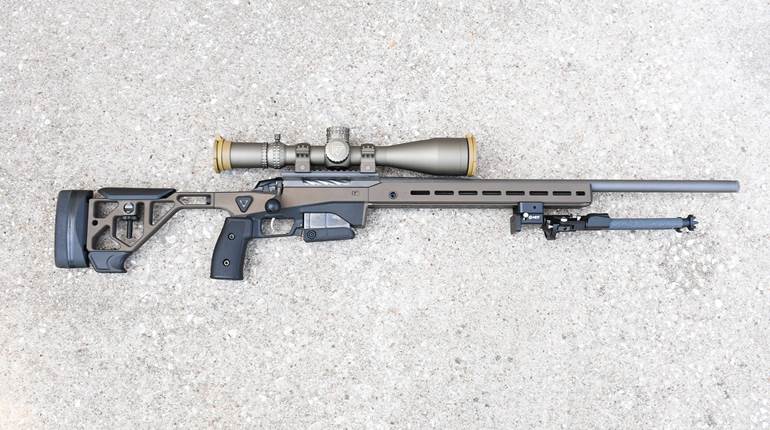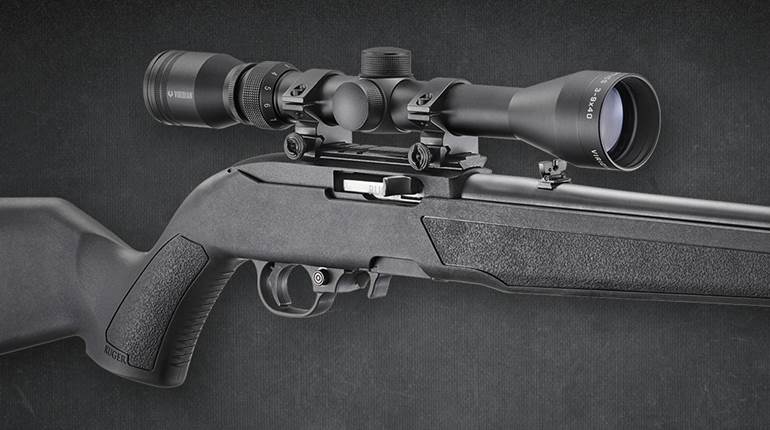At the turn of the 20th century, several companies began developing self-loading mechanisms for handguns and rifles, and two companies that were at the forefront of semi-automatic innovation were Remington Arms and Winchester Repeating Arms. Winchester's design, the Model 1907, had a number of unique features and saw some commercial success, as well as service in law-enforcement roles. Watch our "American Rifleman Television" I Have This Old Gun segment above to see the Model 1907 in action.
"Around the turn of the century, when self-loading pistols and rifles were becoming the vogue, Winchester was right there at the beginning," American Rifleman Field Editor Garry James said. "And in 1903, they came out with a lovely little blowback in in .22 Winchester Auto. A couple years later, they came out with another one in .35 Winchester Self-Loader, and then in 1907, one in .351 Winchester Self-Loader. And again, even later on in 1910, one in .401. They were blowbacks and, especially in the heavy calibers, they required a pretty heavy block to handle the pressures of these guns, because those cartridges, especially the .351 and the .401 were pretty serious rounds. So, when you shoot the gun, I mean, it gives you a pretty good belt."
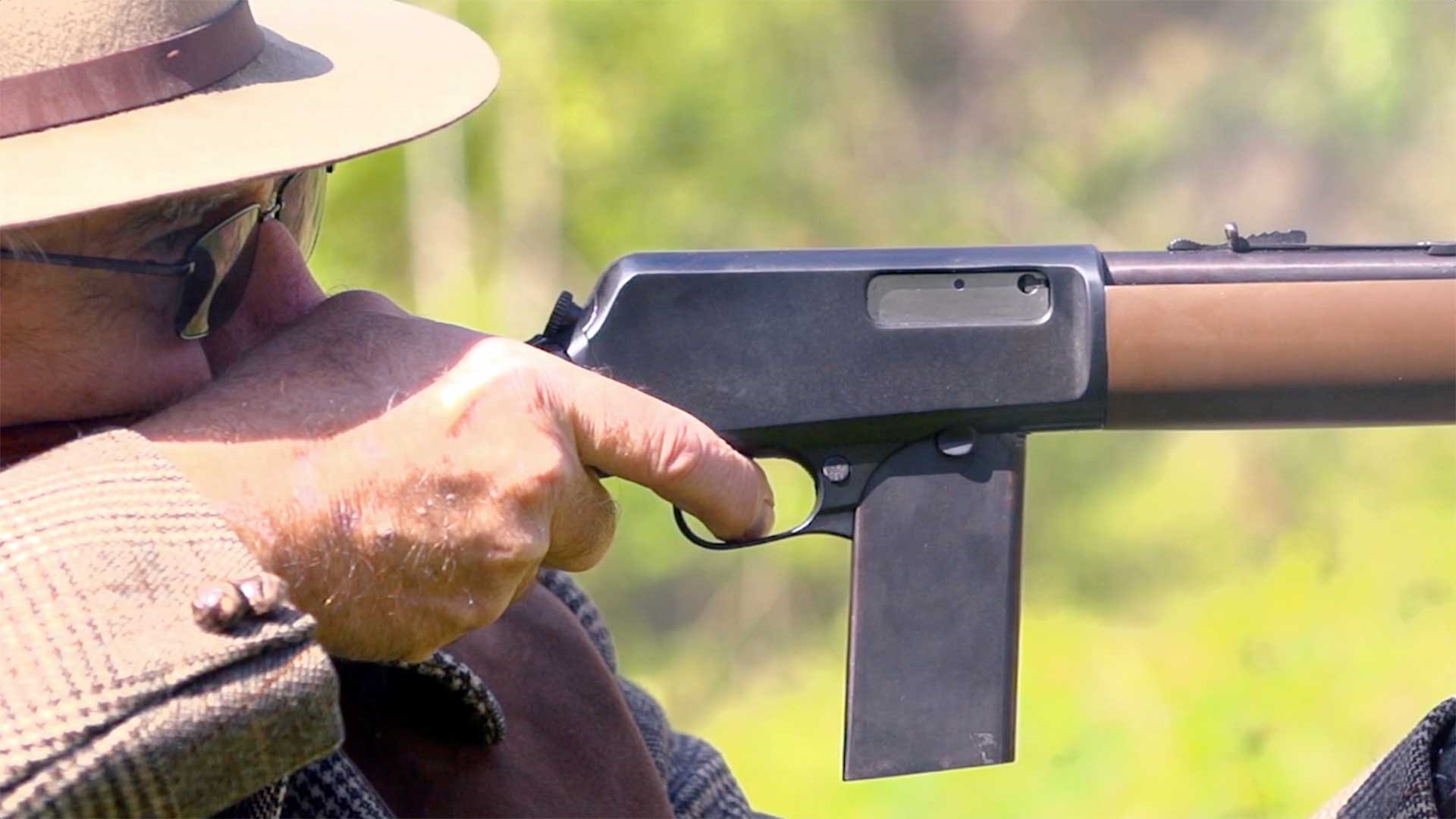
A number of model variations of the Winchester Model 1907 were ultimately developed, and a range of different magazines, with different capacities were developed. Notably, a French military contract fulfilled by Winchester included 20-round detachable box magazines designed for the Model 1907, and these guns were converted to full-automatic fire.
"The 1907 is pretty interesting all around in the fact that it appears on the civilian market a full year before any of the militaries of the world sit up and take notice to a semi-automatic rifle," said Philip Schreier, director of the National Firearms Museum. "Granted, fully automatic machine guns had been out there for a while, but, in Mexico, a Gen. Mondragon, you know, designed the first semi-automatic rifle that was ever adopted by a military force in 1908. And here we are with this Winchester in .351 that's out even a year before that finds acceptance."
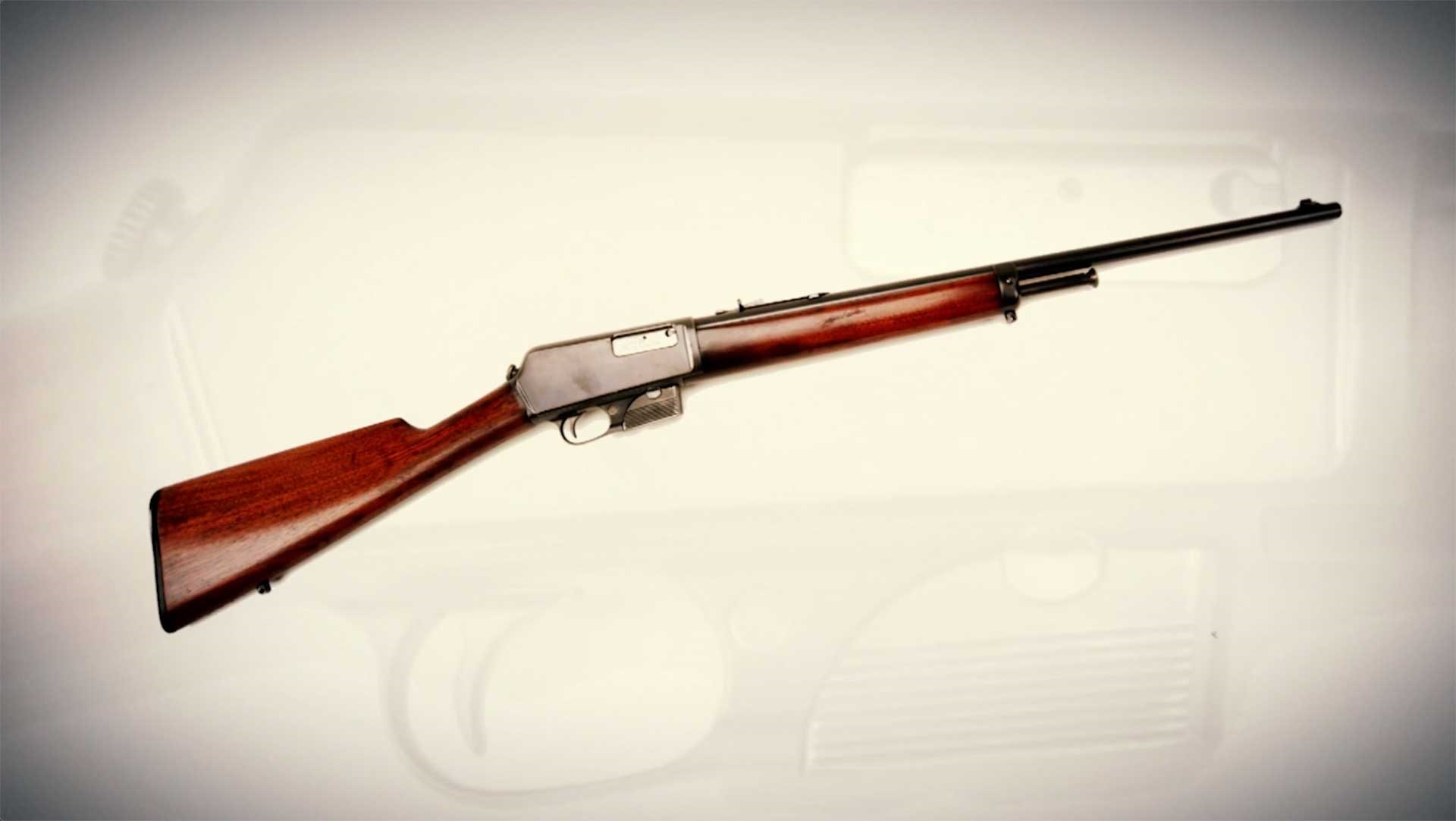
Additional Winchester Model 1907s were purchased by law-enforcement units across America, and even the gangsters of the '20s and '30s took notice of the semi-automatic arm. One gunsmith, Hyman Levin, was known to modify Model 1907s for use by gangsters, adding a heavy metal fore-end and a Thompson submachine gun foregrip to the gun to aid in controlling recoil and muzzle rise.
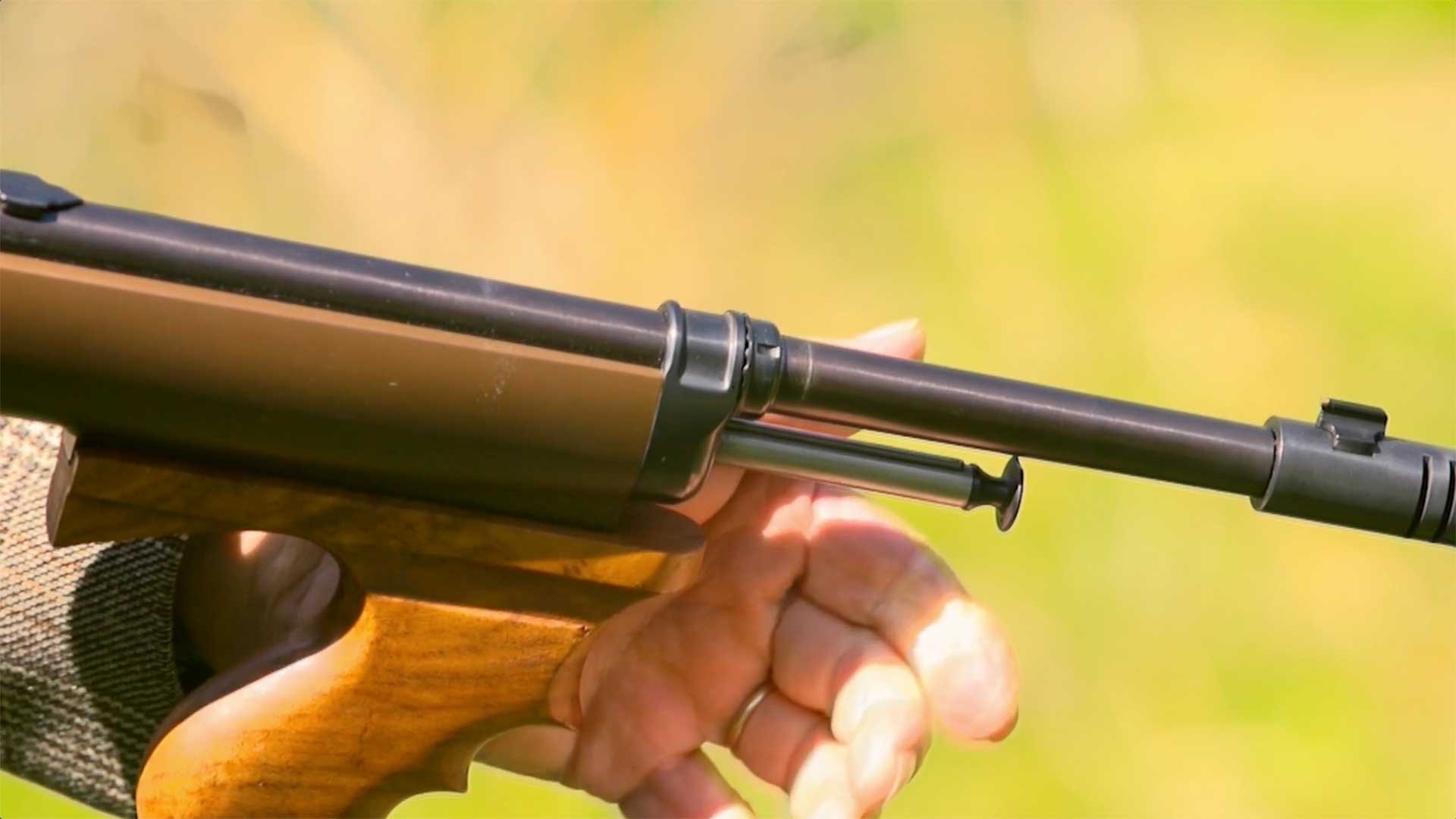 Readying the Winchester Model 1907 for firing involved depressing a plunger located forward of the fore-end, which pushed the bolt rearward and enabled it to pick up a cartridge from the detachable box magazine.
Readying the Winchester Model 1907 for firing involved depressing a plunger located forward of the fore-end, which pushed the bolt rearward and enabled it to pick up a cartridge from the detachable box magazine.
"There was an innovator at Winchester by the name of Thomas Crossley Johnson who was developing semi-automatic actions long before anyone really considered them to be viable for anything, let alone military or commercial use. Thomas Crossley Johnson first innovated and pioneered some of the semi-automatic actions on a blowback principle with the Model 1903, which was a rimfire, and he built on this with the later Model 1905," American Rifleman Executive Editor Evan Brune said. "Now the problem with the '03 and the '05 was they performed reliably, and they were capable guns, except that they fired very anemic cartridges. And so Johnson went back to the drawing board, and in 1907, he developed his blowback-actuated action in his semi-automatic rifle and paired it with a much more robust cartridge in the .351 Self-Loader."
Despite the moderate commercial success and interest in the Winchester Model 1907, it never gained the commercial success or attention of later bolt-action sporting rifles. Many returning servicemen, after having used bolt-action rifles during World War I, sought sporting arms that were familiar to them, leading to the proliferation of bolt-action hunting rifles based on the U.S. Model 1917 or Model 1903 Springfield. Additionally, the added cost of a semi-automatic sporting arm kept sales down.
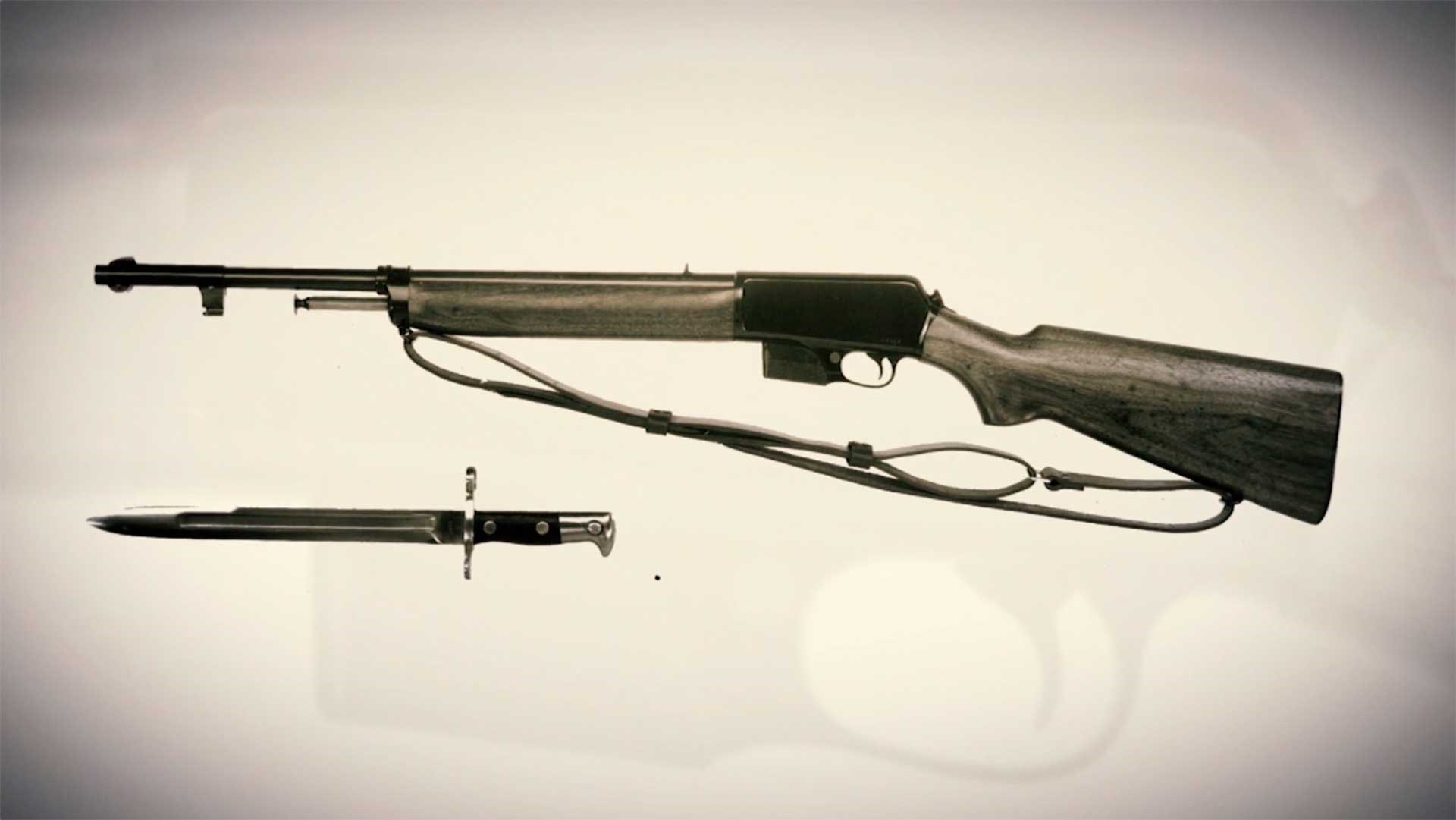
"Compared to bolt-action rifles of the time, you were paying a premium for both the gun and in the ammunition for a sporting rifle, and that was just something that people weren't prepared to do, particularly as the Great Depression arrived," Brune said. "The 1907, despite some of these hurdles, ended up seeing a lifetime of about 50 years of production and finally ceased production in 1957 after almost 60,000 guns had been made."
To watch complete segments of past episodes of American Rifleman TV, go to americanrifleman.org/artv. For all-new episodes of ARTV, tune in Wednesday nights to Outdoor Channel 8:30 p.m. and 11:30 p.m. EST.
